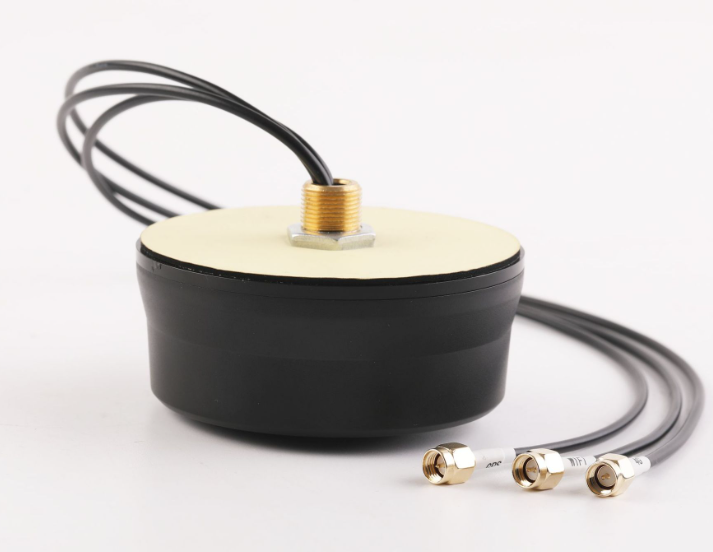Gps Antenna categories (GPS Antenna categories and their applications)
With the rapid development of Global Positioning system (GPS) technology, GPS antennas, as the key equipment to receive GPS signals, are increasingly widely used. In this paper, the categories of GPS antennas are introduced in detail, and their applications in different fields are discussed.
Overview of GPS Antenna
GPS antenna is a device that receives GPS satellite signals. Its main function is to convert the received weak GPS signals into electrical signals for subsequent processing. The performance of GPS antennas directly affects the positioning accuracy and stability of GPS equipment.
GPS antenna category
1. Classify by structure
(1) Spiral antenna: suitable for hand-held GPS equipment, with the characteristics of small size and light weight.
(2) Rod antenna: commonly used in vehicle or shipboard GPS equipment, with good receiving performance.
(3) Plate antenna: widely used in fixed GPS equipment, such as base station and measurement equipment, with the characteristics of stable receiving performance and high gain.
(4) Array antenna: composed of multiple antenna elements, it is suitable for high-precision applications, such as aerospace, UAV and so on.
2. Classify by working frequency
(1) L-band antenna: it mainly receives the L-band signal of GPS satellite, which is the most commonly used type of GPS antenna at present.
(2) other frequency band antennas: such as receiving antennas of other satellite navigation systems, such as GLONASS, Galileo, etc.
3. Classify by application scenario
(1) Civil GPS antenna: widely used in smart phones, vehicle navigation, measuring instruments and other fields.
(2) Professional GPS antenna: suitable for aerospace, UAV, marine fishery and other high-precision applications.
Characteristics and application fields of all kinds of GPS antennas
1. Spiral antenna: small size, light weight, suitable for handheld devices and mobile applications, often used for outdoor exploration, hiking and other scenes.
2. Rod antenna: with good receiving performance and compact structure, it is suitable for vehicle or shipborne GPS equipment, and is widely used in navigation, ship transportation and other fields.
3. Flat panel antenna: stable receiving performance and high gain. It is suitable for fixed GPS equipment and is often used in high precision applications such as measurement and base station positioning.
4. Array antenna: composed of multiple antenna elements, it has the characteristics of high sensitivity and high precision, and is suitable for high-precision applications such as aerospace, UAV and so on.
Selection and Application points for attention of GPS Antenna
1. Select the appropriate GPS antenna type according to the application scene, select spiral antenna for handheld equipment, rod antenna for vehicle or shipborne equipment, plate or array antenna for fixed equipment or high-precision applications.
2. The performance parameters of GPS antenna, such as gain, axis ratio, polarization mode and so on, are considered to ensure the receiving performance.
3. Pay attention to the installation position of the GPS antenna to avoid being installed near the metal or in the environment with strong electromagnetic interference, so as to ensure the reception quality of the signal.
4. For professional applications, such as aerospace, UAV and so on, it is necessary to choose GPS antennas with high precision and high stability to meet the needs of high-precision positioning.
With the continuous development of GPS technology, the types of GPS antennas are becoming more and more abundant, which can meet the application needs of different fields. Choosing a suitable GPS antenna is of great significance to improve the positioning accuracy and stability. In practical applications, it is necessary to select the appropriate GPS antenna type according to the specific scene, and pay attention to its performance parameters and installation location to ensure the signal reception quality.
Prospect
With the continuous development of satellite navigation system technology, such as Beidou satellite navigation system, Galileo and other global or regional satellite navigation systems, multi-system compatible GPS antennas will become a development trend. with the rapid development of the Internet of things, self-driving and other fields, the demand for high-precision and high-stability GPS antennas will be further improved. in the future, GPS antennas will develop in the direction of miniaturization, multi-function and high sensitivity. To meet the application needs of different fields.
As the key equipment to receive GPS signals, GPS antennas have a wide range of categories and applications. This paper introduces the categories, characteristics and application fields of GPS antennas in detail, hoping to provide some reference and help for readers in the selection and application of GPS antennas.





